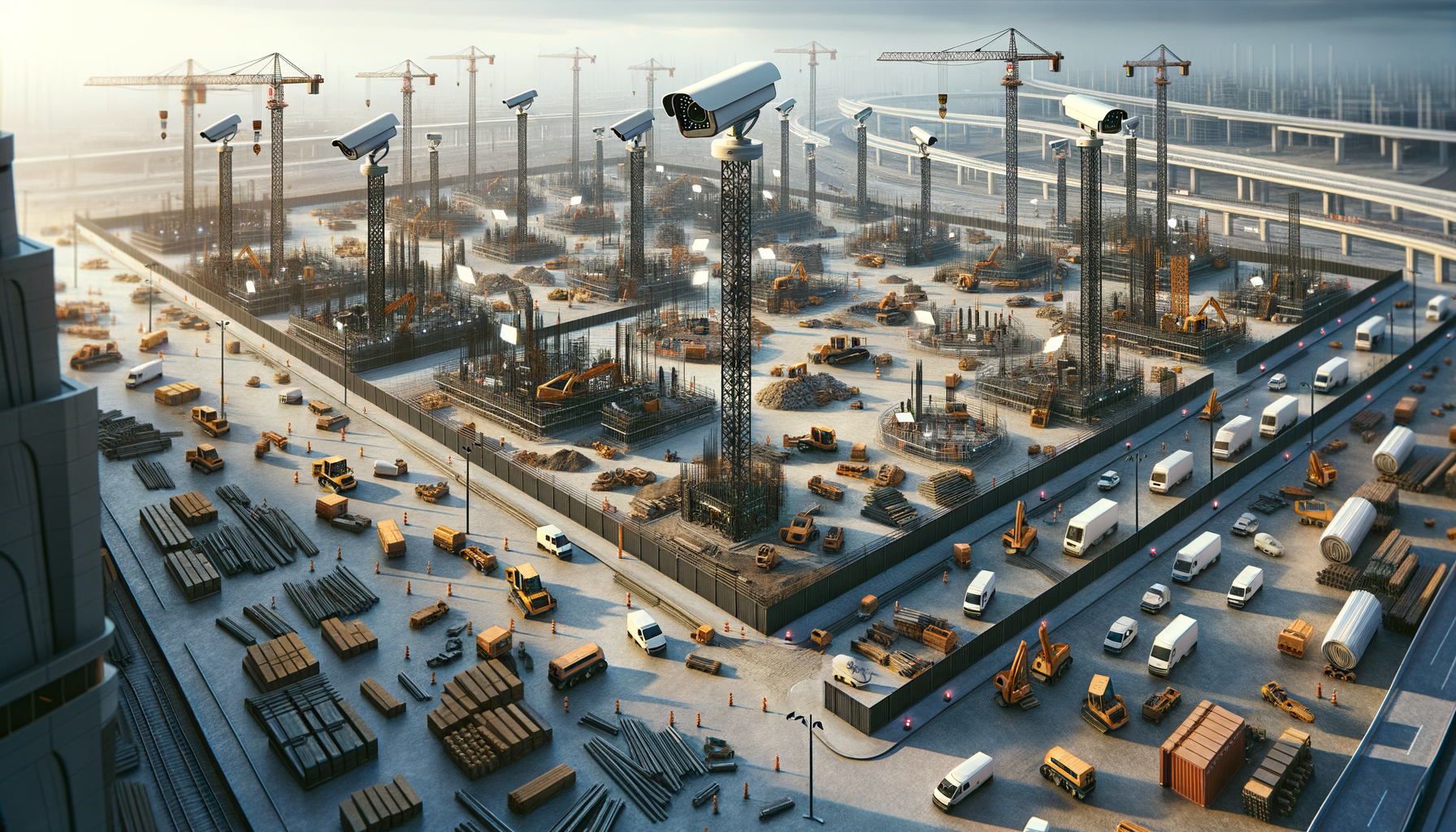The Importance of Security Cameras on Construction Sites
In the bustling world of construction, where numerous activities occur simultaneously, maintaining security and safety is paramount. Security cameras play a crucial role in ensuring these sites remain secure. These cameras not only deter potential theft but also provide a sense of safety for workers. Construction sites are often targets for theft due to the high value of machinery and materials. By installing surveillance cameras, site managers can monitor activities in real-time, reducing the risk of theft and vandalism.
Moreover, security cameras enhance operational efficiency. They allow supervisors to oversee various sections of the site without being physically present, saving time and resources. This capability is particularly beneficial for large-scale projects where the physical presence of management at every location is impractical. Additionally, recorded footage can be used to review incidents, ensuring accountability and providing evidence in case of disputes.
Another significant advantage is the improvement in safety protocols. Cameras can monitor compliance with safety regulations, ensuring that workers adhere to safety guidelines. This monitoring helps in identifying potential hazards before they cause accidents, thereby promoting a safer working environment.
Types of Security Cameras Suitable for Construction Sites
Choosing the right type of security camera is essential for effective surveillance. Several options are available, each with unique features tailored to specific needs. One popular choice is the bullet camera, known for its long-range capabilities. These cameras are ideal for monitoring expansive areas and are often weatherproof, making them suitable for outdoor use.
Dome cameras are another option, offering a discreet surveillance solution. Their design makes it difficult for onlookers to determine the camera’s direction, enhancing security. They are particularly useful in high-traffic areas where subtle monitoring is preferred.
For more advanced needs, pan-tilt-zoom (PTZ) cameras provide flexibility and control. These cameras can rotate and zoom, allowing for detailed monitoring of specific areas. This feature is beneficial for tracking movements and identifying individuals or objects of interest.
Finally, wireless cameras offer ease of installation and flexibility in positioning. They are ideal for sites where wiring is impractical or temporary surveillance is needed. The choice of camera depends on the specific requirements of the construction site, including the size, layout, and security challenges.
Benefits of Integrating Surveillance Technology
The integration of advanced surveillance technology into construction sites offers numerous benefits. One significant advantage is the ability to access live feeds remotely. This feature allows project managers to monitor sites from anywhere, providing flexibility and ensuring constant oversight.
Additionally, modern security systems often come equipped with motion detection and night vision capabilities. Motion detection alerts site managers to unusual activity, enabling quick responses to potential security breaches. Night vision ensures that surveillance continues effectively even in low-light conditions, maintaining security around the clock.
Another benefit is the ability to integrate cameras with other security systems, such as alarms and access control. This integration creates a comprehensive security network, enhancing overall site protection. It also allows for centralized management of security protocols, streamlining operations and improving response times.
Moreover, recorded footage can be invaluable for training purposes. By reviewing past incidents, teams can identify areas for improvement and develop strategies to prevent future occurrences. This proactive approach not only enhances security but also contributes to a culture of continuous improvement.
Challenges and Considerations in Implementing Security Cameras
While security cameras offer numerous benefits, there are challenges and considerations to address when implementing them on construction sites. One primary concern is privacy. It is crucial to ensure that surveillance does not infringe on the privacy rights of workers. Clear policies and communication regarding the use of cameras can help alleviate these concerns.
Another challenge is the cost of installation and maintenance. Security systems can be expensive, particularly for large sites requiring extensive coverage. However, the investment is often justified by the reduction in theft and improved safety, which can lead to cost savings in the long run.
Technical challenges, such as ensuring adequate power supply and network connectivity, must also be addressed. For remote sites, wireless solutions and solar-powered cameras can mitigate these issues. Additionally, regular maintenance is essential to ensure cameras function correctly and provide reliable footage.
Finally, it is important to comply with legal and regulatory requirements regarding surveillance. Understanding and adhering to these regulations is crucial to avoid legal complications and ensure ethical use of security cameras.
Future Trends in Construction Site Surveillance
The future of construction site surveillance is promising, with technological advancements paving the way for more sophisticated systems. One emerging trend is the use of artificial intelligence (AI) in security cameras. AI can enhance video analytics, allowing for more accurate detection of unusual activities and reducing false alarms.
Another trend is the integration of drones for aerial surveillance. Drones provide a bird’s-eye view of construction sites, offering insights that ground-based cameras cannot. They are particularly useful for large or complex sites, where traditional surveillance may be limited.
Cloud-based solutions are also gaining popularity, offering scalable and flexible options for managing security footage. These solutions allow for easy access and storage of large volumes of data, facilitating efficient review and analysis.
As technology continues to evolve, construction sites can expect more advanced and integrated security solutions. These innovations will not only enhance security but also improve efficiency and safety, contributing to more successful project outcomes.



Leave a Reply